Fillers for a beanbag chair: what is it and what are they?
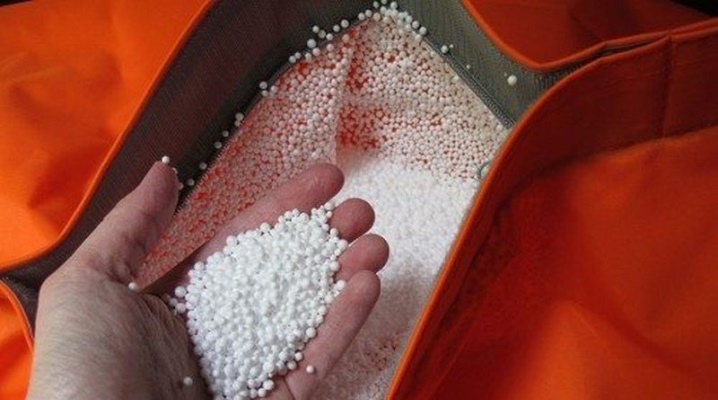
A beanbag chair refers to a frameless piece of furniture. Its design is simple and straightforward - a bag with a filler inside. But it is precisely on what it is filled with that sometimes it depends - whether the chair will become a favorite resting place or will remain empty and idle.
Types of artificial materials
A beanbag chair can be classified as an orthopedic object, as it perfectly follows the shape of our body, allows the muscles to relax optimally. In addition, complete relaxation soothes and stabilizes the nervous system. The useful properties of frameless furniture depend not only on the orthopedic properties, but also on the quality of the filler.
It's no secret that not all man-made materials are safe. Let's try to figure out which ones are healthy and which ones are harmful:
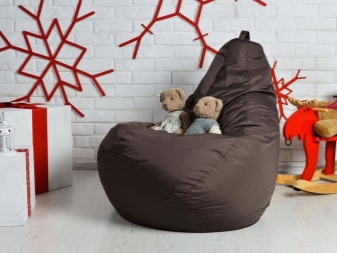
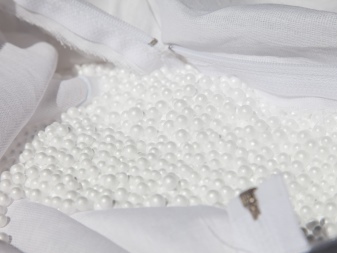
Expanded polystyrene
Foam material is a filler for virtually all domestic-made factory furniture. To obtain granules, polystyrene foam is first melted to a liquid state, then passed through equipment (extruders), which gives the material plasticity and forms small balls of various densities and sizes.
During the production of polystyrene, it is possible to completely get rid of harmful substances, the material does not emit toxins, this is confirmed by the presence of a certificate and testing carried out by experts. The result is a material with excellent characteristics:
- has a high softness index;
- almost does not shrink;
- hygienic;
- not afraid of moisture;
- available, easy to find on sale;
- is inexpensive.
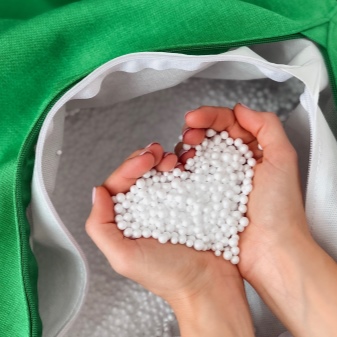
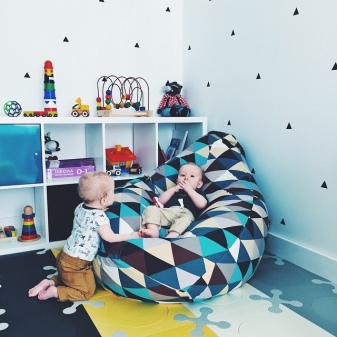
Primary products are suitable for filling furniture. If you use recyclable filler, the chair will sag quickly under constant stress. When purchasing a beanbag, you should pay attention to its contents. Sometimes enterprising manufacturers pass off a secondary product as solid balls or, even worse, crushed foam. And there is a difference between these components.
- High-quality smooth balls are no more than 1 cm in size... The filler of them has a certain softness and free-flowing structure. The primary product does not support combustion, is non-toxic, endowed with anti-fungal properties. A bag made of good raw materials conforms to the body of a seated person, it creates a feeling of comfort. If you leave the chair, it quickly regains its original shape.
- Furniture is stuffed with secondary raw materials along with the crumbs left when crushing the whole product. This material has a different shape and low quality, it will not last long in bean bags.
- The worst filler for a beanbag is crushed foam. It does not have sufficient elasticity and strength. Such bags quickly lose their plasticity and become lumpy, they hardly regain their shape after squeezing, moreover, they are able to maintain combustion.
When choosing a filler or the bag itself, you should make sure that it is made from high-quality primary polystyrene foam. You can choose other artificial materials for your frameless furniture, they are less often used in production, but they have many positive properties.
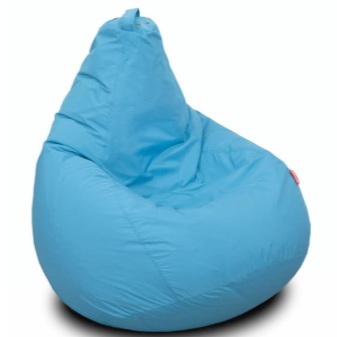
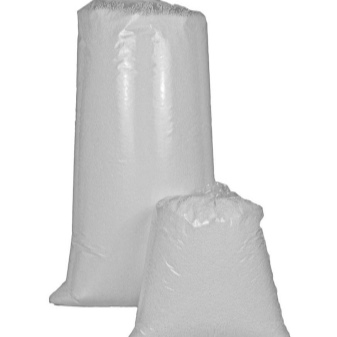
Polypropylene
Furniture made in Asia most often contains polypropylene peas. The balls have proven themselves as a filler, they are durable, have good flowability, hold their shape tightly, and absorb well. In addition, this material is durable, it is not electrified, odorless, it can be washed at temperatures up to 40 degrees. But the safety of polypropylene is not all right.
In our furniture industry, they refuse it because of the toxic substance that is released during a fire, in addition, the material engulfed in fire does not go out for a long time.
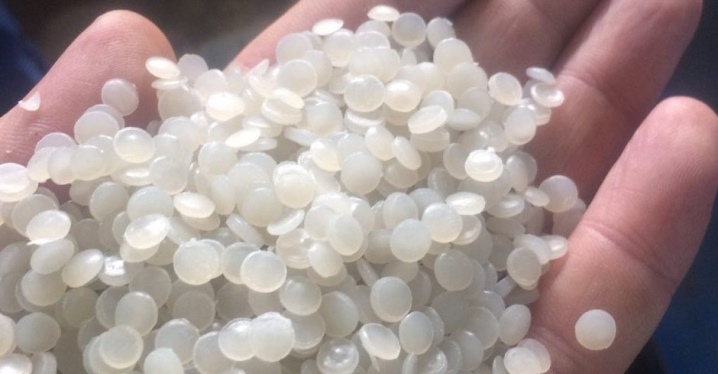
Polyurethane foam
A relatively new material, the so-called modernized foam rubber. It is an environmentally friendly, elastic, hypoallergenic and inexpensive product, it is breathable. Polyurethane foam (PPU) comes in larger fractions than the previous fillers, the product is very dense, therefore it is convenient under leather covers, since fragments will be felt through the fabric. For a beanbag, PPU cannot be called a successful material.
It is fire hazardous, does not like the sun's rays, is short-lived, and quickly sags with daily load.
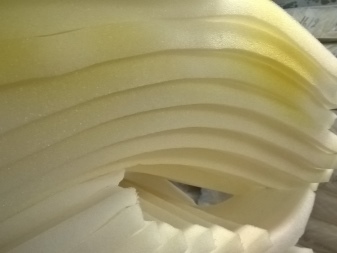

Holofiber
A soft, airy material is ideal as an additive to a denser material that has elasticity and strength, for example, expanded polystyrene. It is holofiber that gives a cozy softness to the product. But, when filling the bag, you need to try to perfectly balance these two substances, otherwise it will lose its elasticity, and the shape will not return after squeezing. The material itself has good air permeability, it is silent and soft, does not cause allergies, does not collect mites, does not absorb moisture and odors.
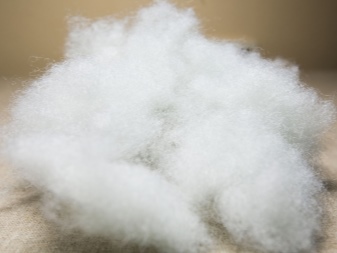
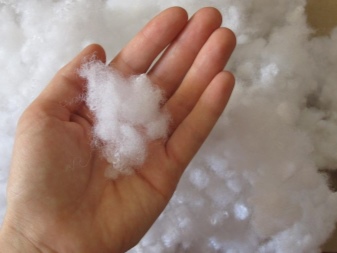
Natural options
For those who are against all chemistry, but want to have their own beanbag, there is an alternative - a natural filler. You can find it anywhere, from farms to home cooking. The main rule is that the material must be perfectly dried, free of fungi and mold. Furniture that has no chemical constituents is commendable. But for objectivity, one should also warn about the shortcomings of natural components:
- they can cause allergies;
- contain down mites;
- they absorb moisture well, therefore, it is not recommended to leave the bag for a long time on the terrace and in other open places;
- it is not always possible to get up to 20 liters of a natural component;
- natural material is short-lived, it collapses and deteriorates, requires replacement;
- the natural content holds its shape worse than artificial components and also lags behind in elasticity.
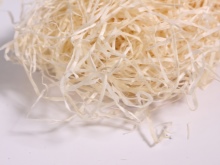
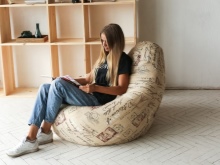
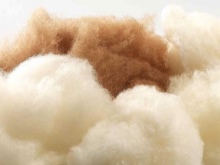
Those who are not scared by the accompanying disadvantages can choose one of the materials for the beanbag, which will be discussed below.
Grains
To create a beanbag, grain fillers are used - peas, rice, beans and other legumes. The loose material follows the shape of the human body, it is pleasant in contact and allows you to relax. But there is no need to wait for a quick recovery from him, and it turns out to be expensive to collect a whole bag of cultural food products.
Continuing the culinary theme, we can separately say about buckwheat, the sensations from contact with its filler are even more pleasant, especially if the bag is "loaded" not with grains, but with husks.
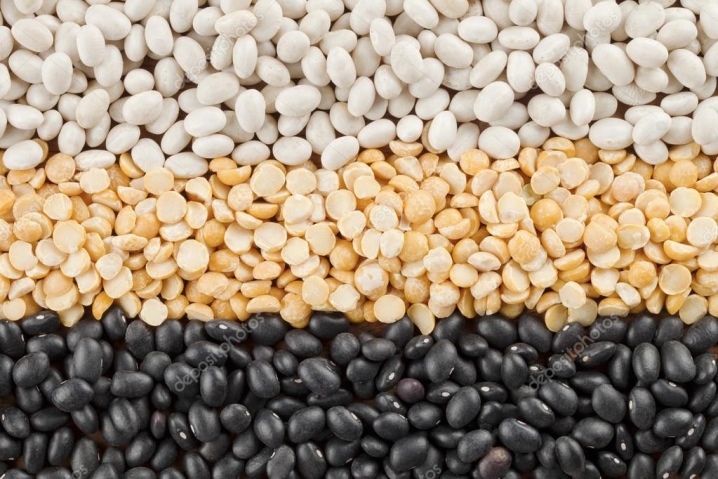
Horsehair
The material is hard, keeps the shape of the chair well, although you cannot call it comfortable. Getting a bag full of horsehair is quite problematic. You can use threads as a filler, they are softer, but in order to purchase them in large quantities, you will have to spend well.
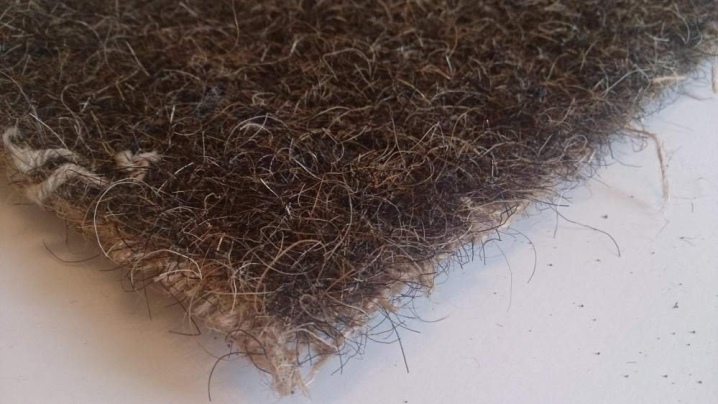
Feather and down
Such a beanbag can only be afforded by villagers who keep ducks or geese in their household. The raw materials are dried and accumulated gradually, they are stored in a dry place until the bag is full and ready for making the chair. It should be borne in mind that a feather in its natural form is not suitable for a product, a quill and a hard core are removed from it, leaving only fluff, which means that even more raw materials will be needed than expected... A bean bag made of down turns out to be incredibly soft, airy and light, relaxing well. But some people are allergic to feathers and they contain dust mites.
Over time, the fluff gets lost, gets dirty and requires special cleaning and restoration.
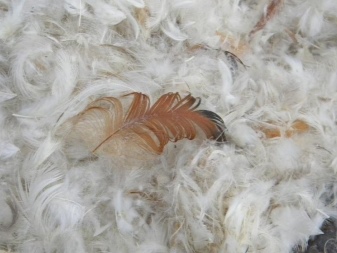
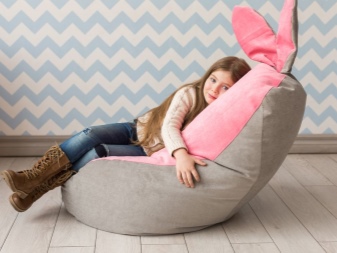
Wool
Armchairs made of wool are referred to as winter options for frameless furniture. They are made from sheep wool and down. It is better to use fabric for the cover, rather than leather and its substitutes, then the beanbag will turn out to be very warm, even if you put the chair on the ice floor, it will in any case be able to keep warm on it.
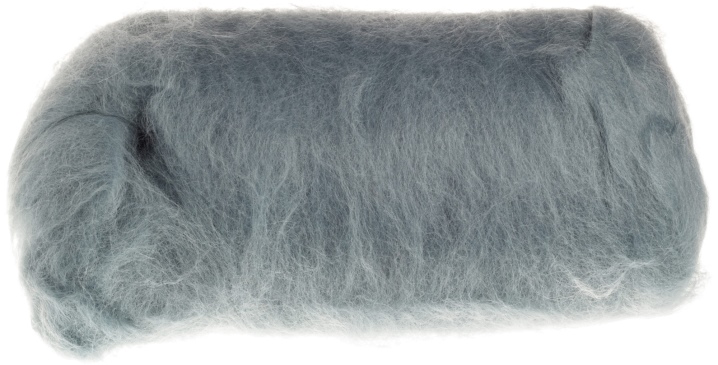
Sawdust
It is not difficult to fill a bag with sawdust, they can be purchased inexpensively at an enterprise for the primary processing of wood (sawmill). Shavings of coniferous trees are especially affordable at a cost. Such material is impregnated with natural resins, the vapors of which have a certain therapeutic effect on a person, soothe headaches, and stabilize some mental states. Before stuffing the sawdust into the bag, you need to carefully sort through them with your hands and remove any sharp chips that can tear the fabric and injure the body. Then the material should be well dried to prevent putrefactive bacteria from growing in the bag.
A finished sawdust beanbag will not be too durable. Unlike fluff and wool, worn-out, crumpled sawdust will have to be replaced with new ones.
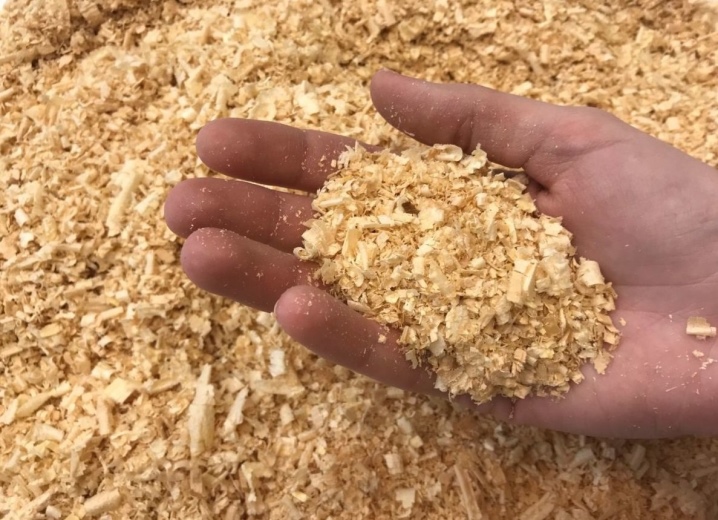
Hay
Those who are not allergic to flowers can fill their bingbag with hay - a useful and completely free option. It is better to use July herbs for these purposes. The scent of a summer meadow and the presence of medicinal plants will make the mattress an object of aromatherapy. Raw materials should be harvested in dry weather, dried in a draft until the material is completely brittle, and only then loaded into a bag, after removing the hard parts. The chair will turn out to be comfortable, but not durable, every season the filling will have to be prepared anew.
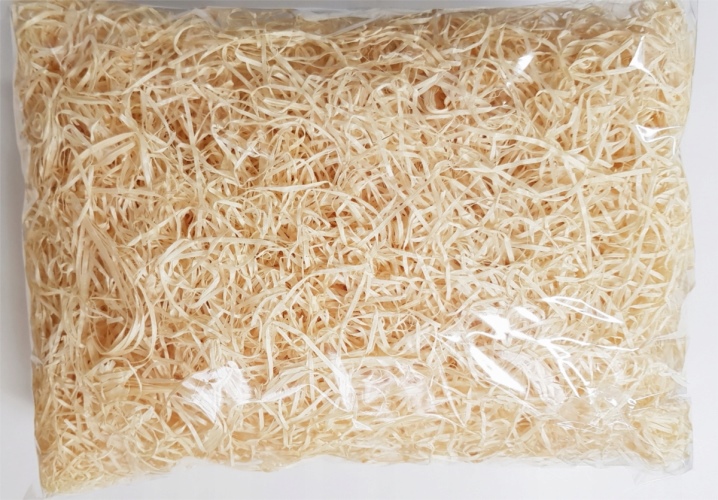
How much filler is needed in liters?
The filler is used in two cases: when filling a new bag, and when replenishing the material that has sagged from time to time. The amount of filling for both options will be different. In addition, each material sets its own requirements for the quantitative content. The most popular filler is expanded polystyrene, using its example, consider the dimensions, weight and volume of the contents of a beanbag chair:
- a product weighing 6.5 kg and measuring 100x120 cm will require an amount of product in the amount of 300-450 liters;
- for a product weighing 5 kg and measuring 90x100 cm, you will need 280-320 liters;
- for a product weighing 4 kg and measuring 80x90 cm, you will need 240-280 liters.
On sale, the filler can be found in cellophane packages in quantities of 100 liters or more. This volume is enough for the formation of the bag and future fillings.
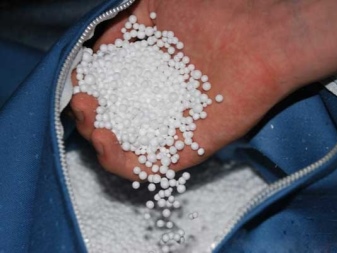
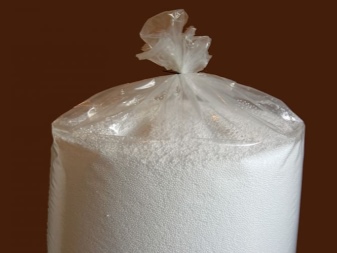
To fill one chair, you will need an average of 250 to 500 liters of material. Its amount depends on the composition, density and quality of the filler itself, the fabric of the cover, the size of the chair and the weight of the owner. For a heavy user, the beanbag must also fit.
As for bedding, you should know that materials are compacted in different ways. This means that each bag is restored as needed (once every 2-6 months) and in the required quantity, on average up to 50 liters per one filling.
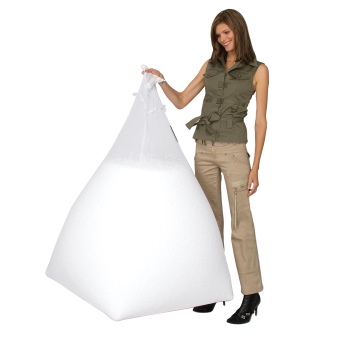
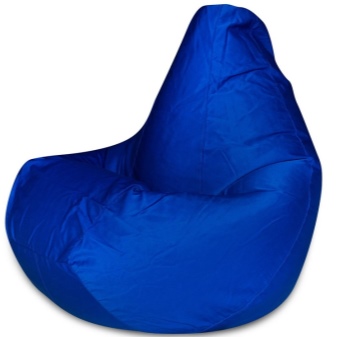
Natural filler gets confused and sags more often than artificial, but this does not apply to cereals and beans, which are more resistant to the squeezing process.
How to fill at home?
The beanbag chair can be purchased ready-made at a furniture store. Those who like to do everything with their own hands can choose safe high-quality fillers for the product, they are available commercially. If there are no funds or a lot of imagination, the materials at hand that surround us in everyday life will help to realize it. Household filler can be found in the kitchen and any other room. The question is only in quantity, not every house has a bag of peas or torn paper hidden. So, the materials for a chair-pouf at home can be found as follows:
- loose cereals;
- dry herbs;
- seeds;
- pieces of torn paper;
- trimming fabrics, batting and yarn;
- cut remains of foam rubber and padding polyester;
- animal hair;
- cotton wool.
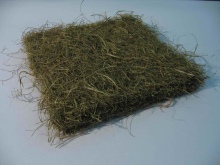

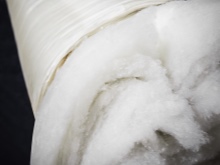
Each of these materials will work for filling a bag, but will not be ideal. Cereals will create fewer problems, although they will attract insects and rodents, their free-flowing structure perfectly takes the shape of the body, and the density allows it to serve for a long time without shrinking.
Hay and torn paper will need to be replenished frequently, as they quickly go astray. Cotton wool will be fluffy and soft only for the first time, then it will turn into a lump. Scraps of fabric and yarn can keep their shape for a couple of months, but over time, such a filler sags and begins to cause inconvenience. Bags will "work" much more productively if fillers such as paper, fabric, yarn, cotton wool are supplemented with scraps of foam rubber. This will help maintain volume for a while.
You need to study the filler well before entrusting your frameless furniture to it. The shape of the product, durability and comfort, and in some cases also the benefits for human health depend on it.

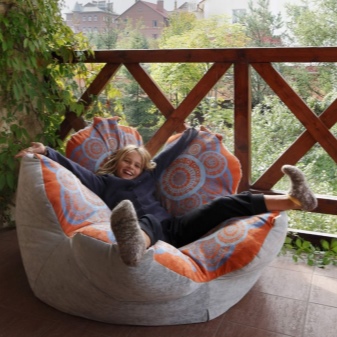
See below for bean bag fillings.













The comment was sent successfully.